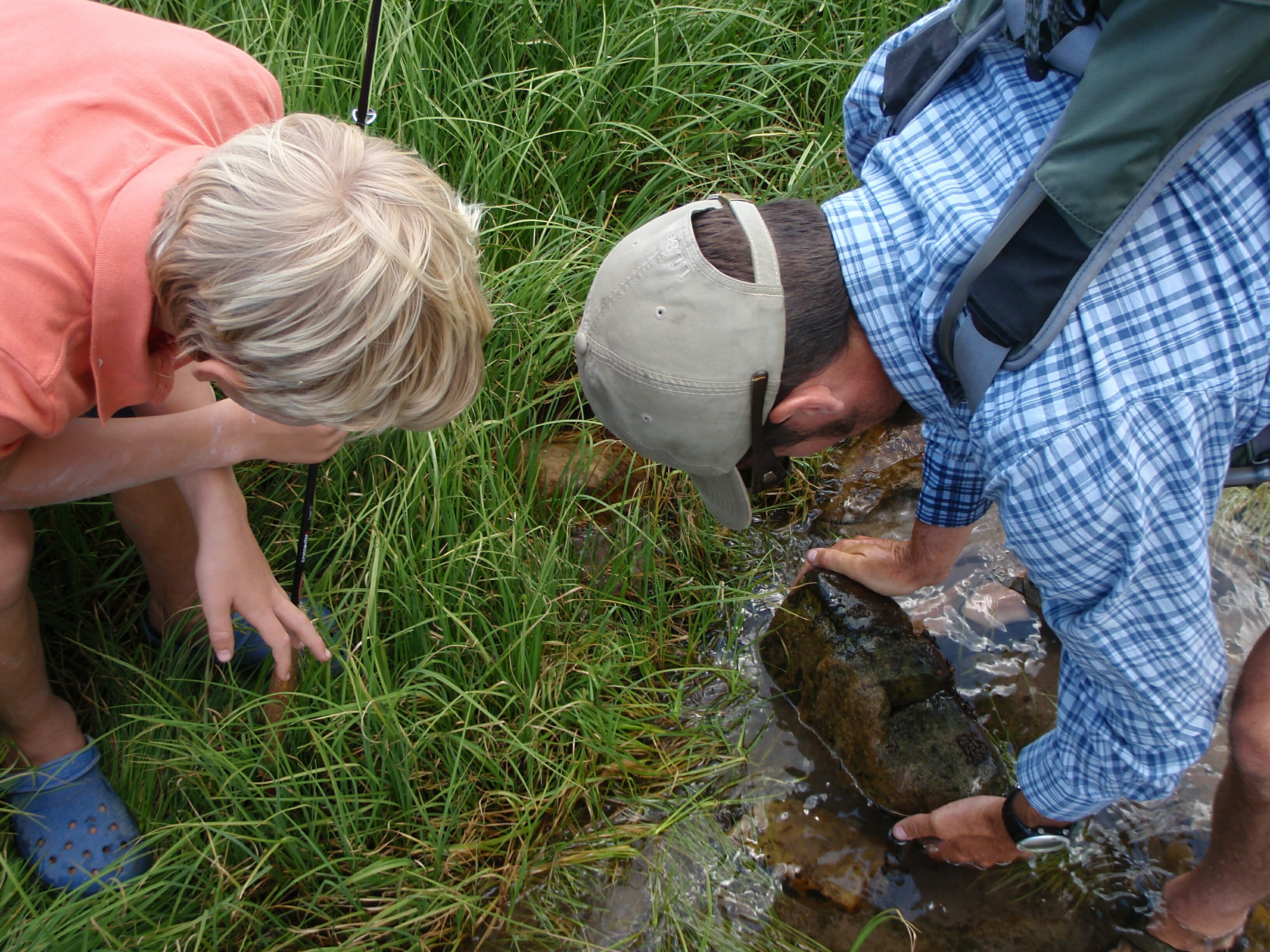When I was a kid fishing with my grandfather on bigger water, the first thing he always did was flip over rocks as we walked along the river. He’d give each rock a good look, and he’d point out squiggly little bugs to me and my brothers and cousins.
“See that?” he’d ask, pointing to the lively critters that literally just had their whole world turned upside down. “That’s what the fish are eating.”
When we finally got to where we’d fish, he’d gear up his fly rod and carefuly look through his fly box. As often as not, he’d settle on a big fat grasshopper (because not only was he watching what was under rocks, but what was bouncing out of our way on the trail), but now and then he’s put something small and unassuming on his tippet that, I assumed, reasonably resembled one of the little squirming critters on the rocks we’d turned over.
For us kids? We usually got nightcrawlers fresh from Grandma’s garden, because “they’re always eating worms.”
This past weekend, I met a friend of mine down in Southeast Idaho to fish a stretch of the Bear River, which is usually a really good winter fishery. But, as our luck would have it, the water managers ramped up the flows the day before we arrived and, while the flow wasn’t horrible, it was enough to put the fish into a funk. We moved around a lot, but didn’t see much.
Finally, toward the end of the day, as I walked upstream along the swift-flowing river, I kicked over a rock and noticed the remnants of a pretty big crawfish. I looked some more. More pincers and legs.
I pulled every fly box I had out of every pocket and finally found something that might look crustacean-ish enough. It was big and heavy, which was good—I needed to get deep.
I flipped the big bug into the current and withing seconds had a hit. A while later, I actually connected with a respectable trout, but lost it in the heavy current. It was just one of those days. Nevertheless, I was reminded to spend some time in “discovery” mode. Turn over some rocks. Your chances will only get better.
— Chris Hunt



